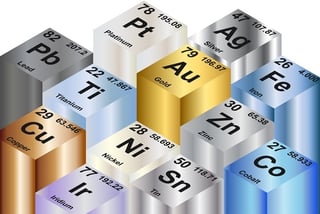The curve which is fitted through these clusters known as an s n diagram stress vs.
References material properties sheet metal fatigue.
As a rough guide the fatigue limit is usually about 40 of the tensile strength.
Fatigue can be defined as progressive localized damage due to fluctuating stress and strains on materials.
T 2n y 2n0 f mean stress cr0 effects may be.
Failure of metal or components occurs for reasons like irregularities in loading defects in the material inadequacies in design deficiencies in maintenance deficiencies in construction and due to environmental conditions.
The red points in the chart represent the cyclic stress for each test and the number of cycles at which the specimen broke.
In the nineteenth century the sudden failing of metal railway axles was thought to be caused by the metal crystallising because of the brittle appearance of the fracture surface but this has since been disproved.
In case of ferrous alloys there is a clear limit the metal can resist.
The provided values tend toward the conservative end of the spectrum and could be used as baseline design values for preliminary design.
Fatigue crack crack growth rate fatigue crack growth sheet material slow crack growth these keywords were added by machine and not by the authors.
Finding fatigue data in the total materia database.
The material property data provided are intended to be representative of the material described.
Some materials notably low carbon steels exhibit a flattening off at a particular stress level as at a in figure 1 which is referred to as the fatigue limit.
Both strain life and stress life parameters are given with monotonic properties added for the reference and statistical.
Fatigue has traditionally been associated with the failure of metal components which led to the term metal fatigue.
In case the stress is lower than the limit according to the number of cycles there is no fear of breaking.
This leads to its use in aircraft fuel oil lines fuel tanks other transportation areas sheet metal work appliances and lighting wire and rivets.
The tables below provide properties of common engineering materials.
Strain controlled fatigue properties the smooth specimen fatigue be havior of a metal tested under reversed strain control may be characterized by four material parameters 26 28 which relate the strain amplitude ea to the failure life 2nr see table 1.
Total materia extended range includes the largest database of fatigue data and cyclic properties for thousands of metal alloys heat treatments and loading conditions.
This process is experimental and the keywords may be updated as the learning algorithm improves.
Number represents the statistical behavior of the fatigue properties of that specific material at that specific strength level.

